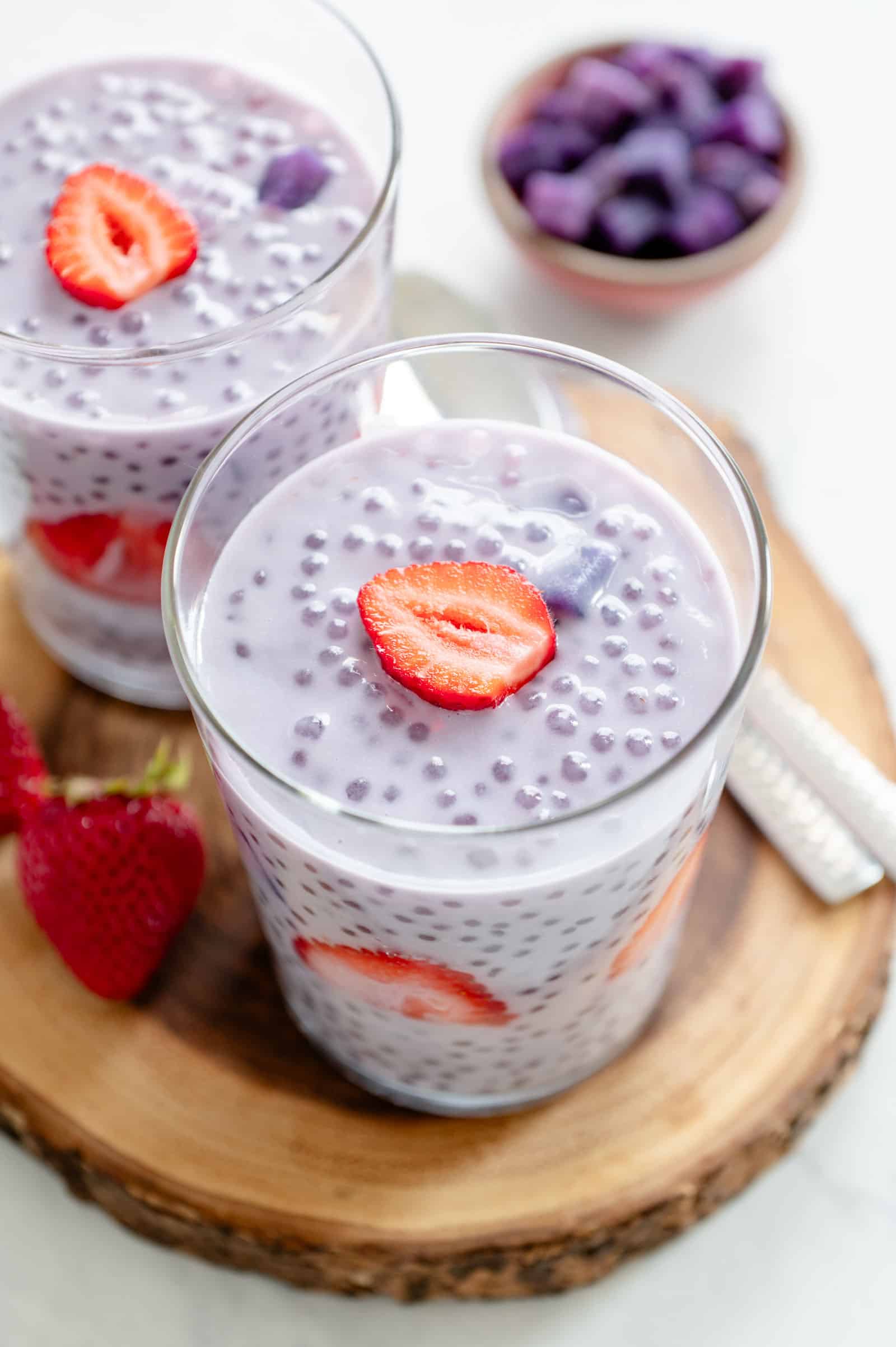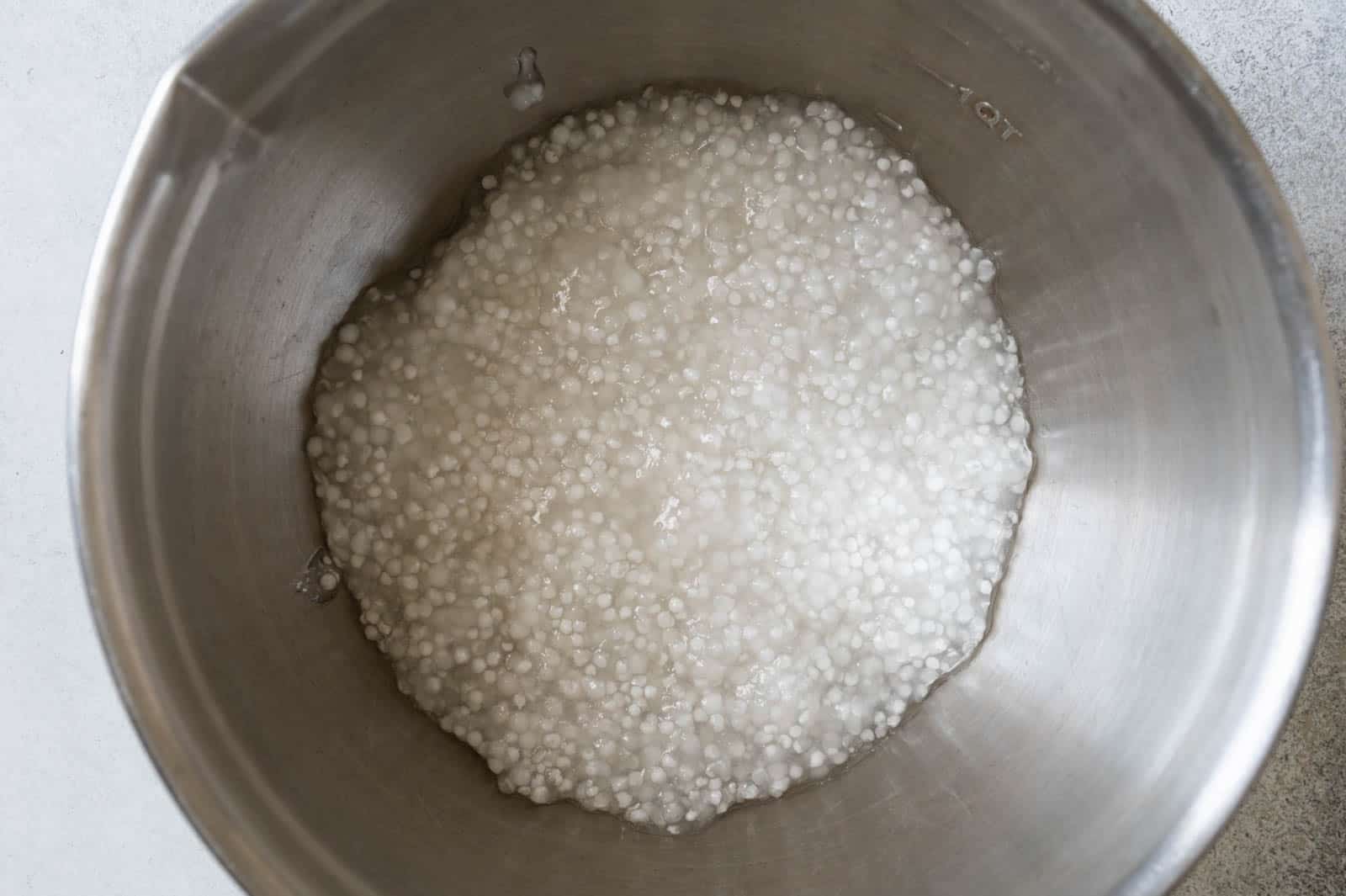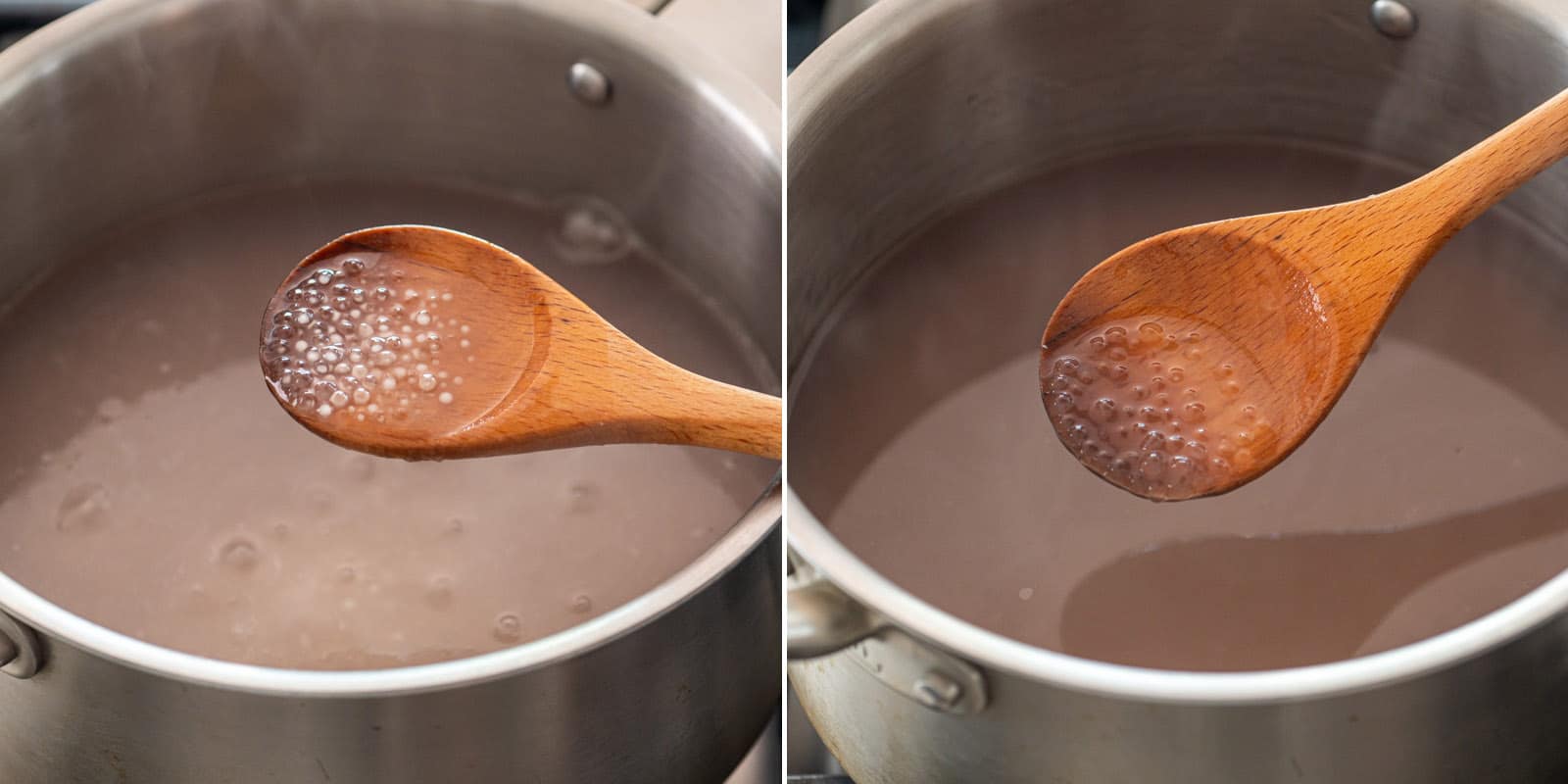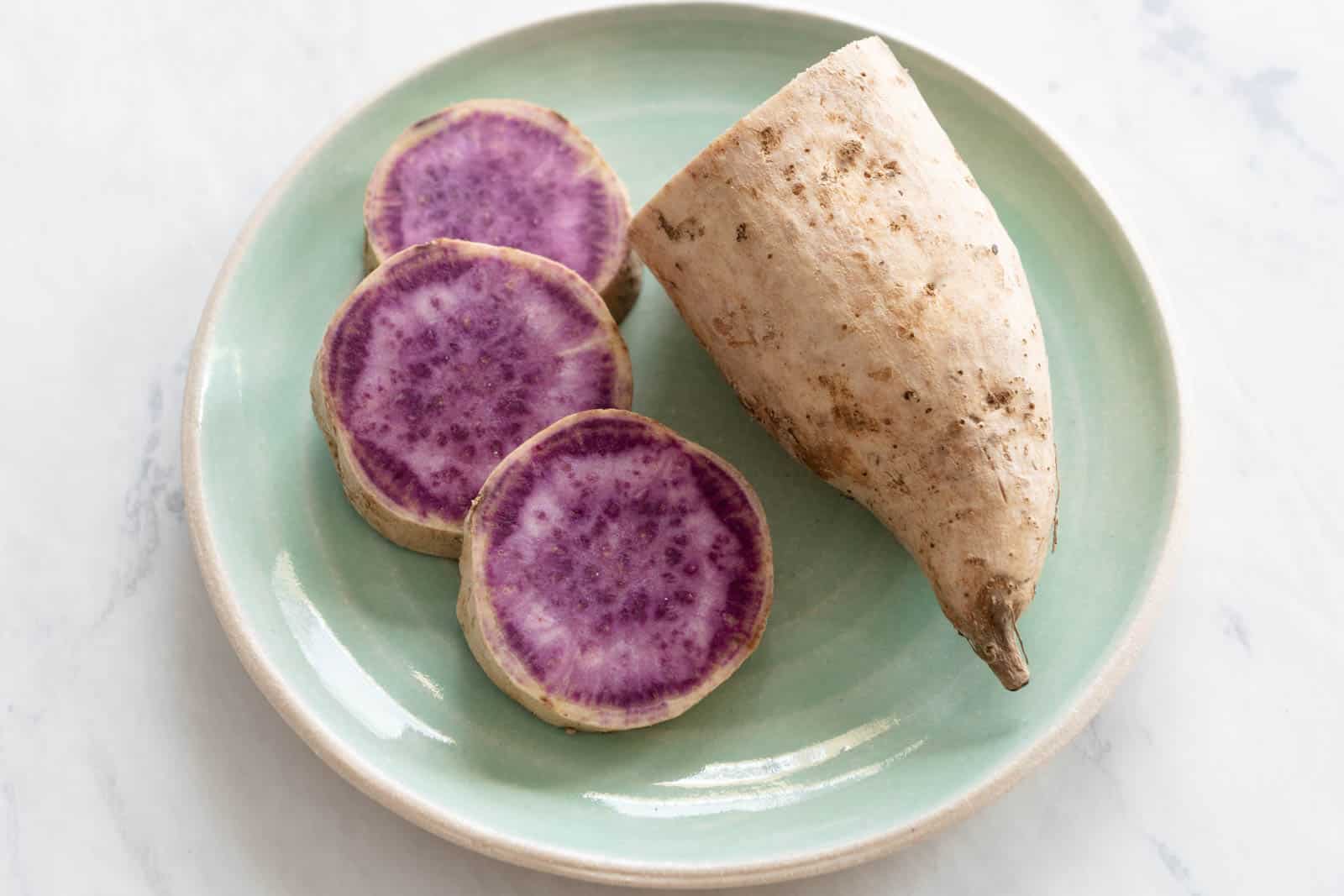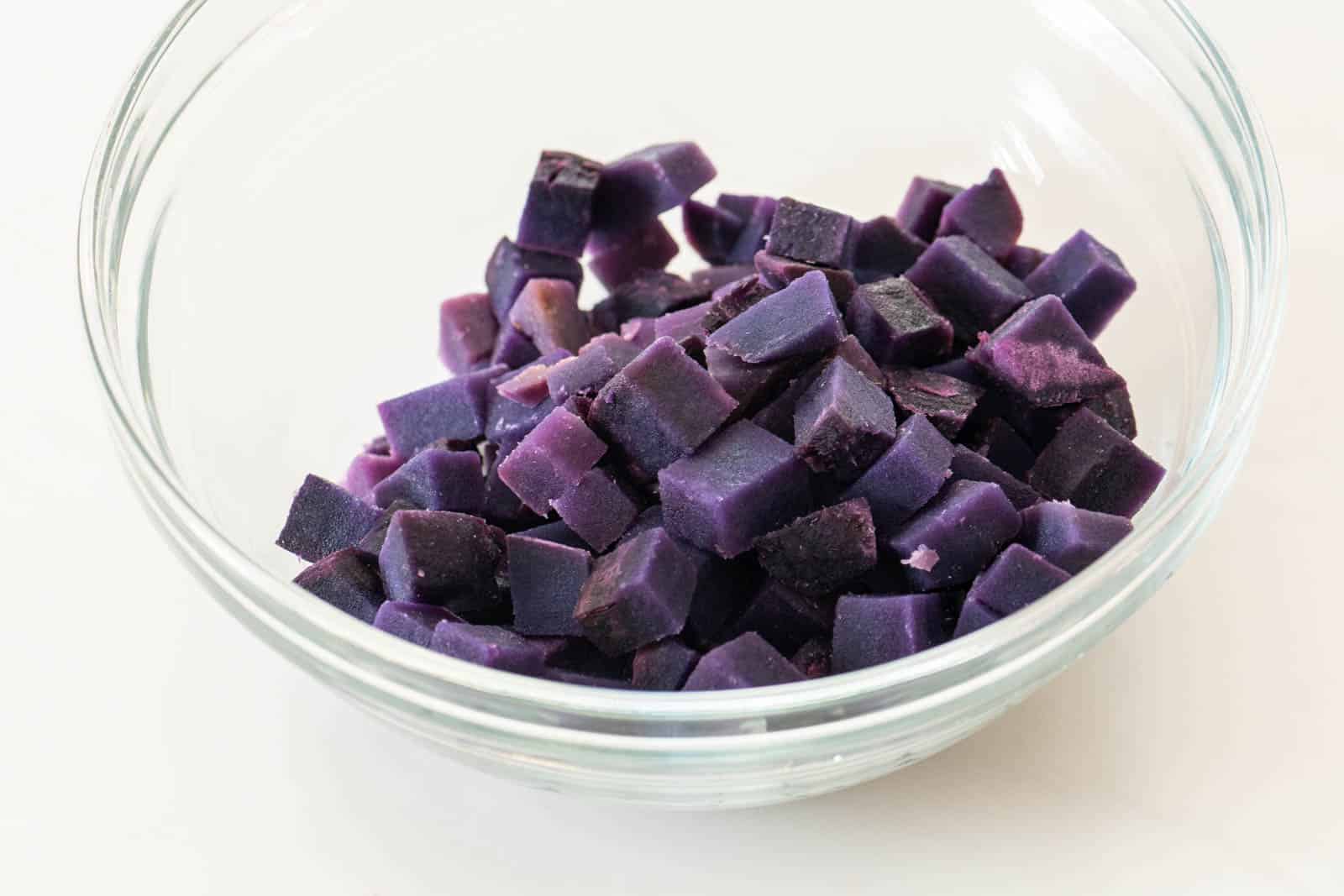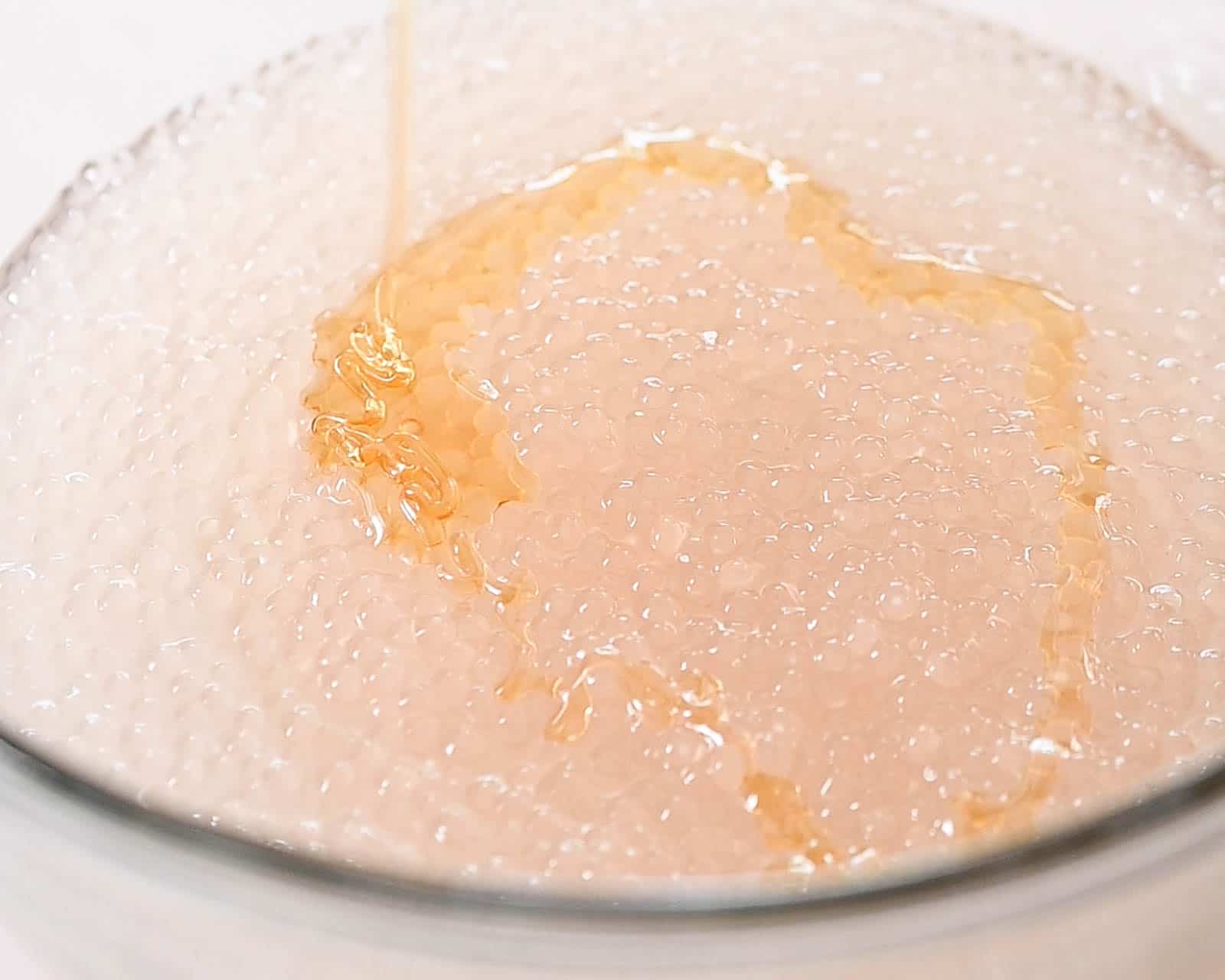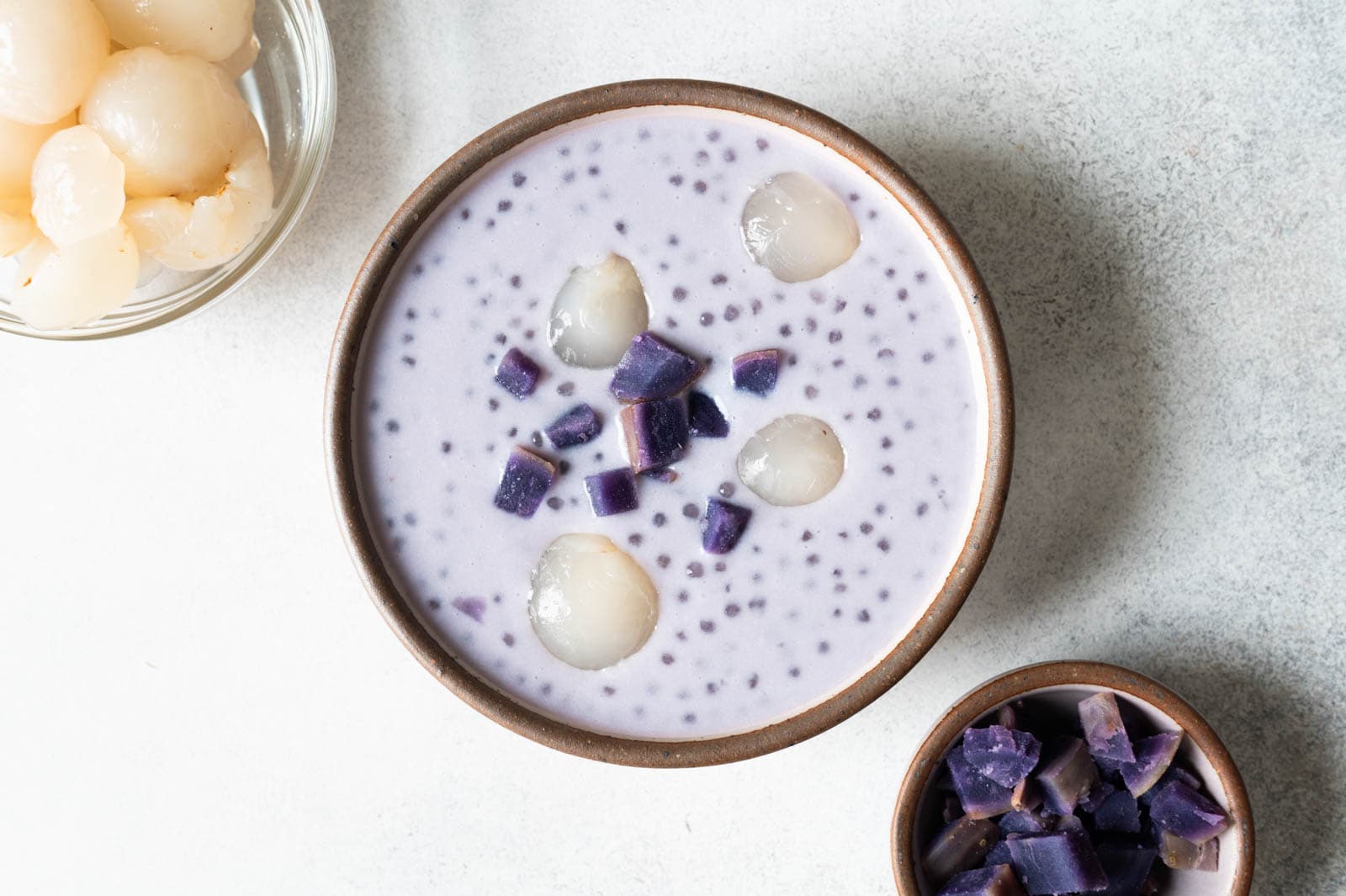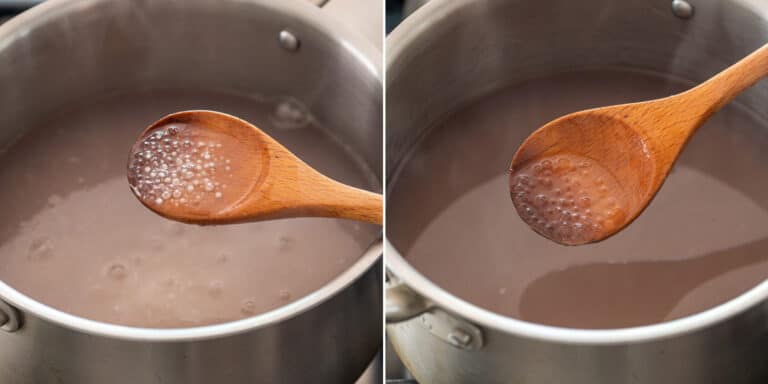COOKING NOTES FOR PURPLE SWEET POTATO TAPIOCA PUDDING
SAGO VS TAPIOCA PEARLS
Whether this style of dessert should be called “tapioca pudding” or “sago” has been a hotly debated topic in the comments section of one of my videos on TikTok. In Asian dessert shops, and indeed most recipes online, these pudding-like desserts that use small tapioca pearls are often called “sago.” What I learned during my research, however, is that genuine sago and tapioca pearls are not the same thing. As cookbook author Pailin Chongchitnant explains, sago are brown pearls derived from starch inside the trunks of sago palm trees. Tapioca pearls, on the other hand, are usually derived from cassava root, which lends to the white color of the pearls. Pailin has great photos that illustrate how sago and tapioca pearls differ in appearance. Cassava grows much faster than sago palm trees, which is why tapioca pearls are less expensive and more readily available than sago. Consequently, most sago recipes use tapioca pearls to imitate genuine sago. Because sago and tapioca pearls are two different things, I’ve generally called these desserts “tapioca pudding.” It’s also a closer translation of what this dessert is called in Chinese, 西米露. (In Cantonese, 西米露 is pronounced sai mai lo; in Mandarin, it’s xi mi lu.) However, I acknowledge that many people call these desserts “sago,” which is why it’s also in the name of this recipe.
COOKING TAPIOCA PEARLS
When cooking small tapioca pearls, make sure to bring the water to boil before adding the pearls to the saucepan. Do not add the tapioca pearls when the water is still cold because the tapioca pearls can melt together (see photo below). The first time I tried making mango tapioca pudding, I added the pearls before the water boiled and the pearls congealed into a giant mass. Learn from my mistake: wait until the water reaches the boiling point before adding the tapioca pearls. You’ll cook the pearls for about 15 minutes over medium-high heat. After 15 minutes, the exterior of the pearls will look translucent and the center will have tiny specks of white color (see photo above, left). Turn off the heat, cover the pot with the lid and let the pearls sit for another 10 to 15 minutes, until they turn completely translucent (see photo above, right). Once the pearls have turned translucent, drain and rinse them under cold water. Then, transfer the cooked pearls to a large bowl filled with cold water (ice water or cold tap water is fine). This will help cool off the pearls further. Let the pearls sit in the water for a few minutes until you prep the other ingredients.
STEAMING PURPLE SWEET POTATOES
For the puree, I like to use Hawaiian (or Okinawa) purple sweet potatoes with pale yellow skins. I find that Hawaiian purple sweet potatoes have better flavor than the ones with orange/brown skins, like the Stokes purple sweet potato. I usually find Hawaiian purple sweet potatoes in Asian grocery stores. One important note: Hawaiian sweet potatoes are not the same as ube or taro. Ube is a type of yam that has a rough bark-like brown skin. You can read more about ube versus purple sweet potatoes here. Steam several sweet potatoes for 25 to 30 minutes, until you can easily pierce the flesh with a fork. I tried roasting the sweet potatoes during one of my test batches, and the roasting process browned the sweet potatoes too much. You need the sweet potatoes to look vibrant purple to give the puree its nice lavender color. You can also speed up the steaming process by slicing the sweet potatoes before steaming. Let the sweet potatoes cool slightly before peeling them. You’ll need about 3/4 cup of mashed sweet potatoes, which is about 2 medium-sized sweet potatoes. Slice the remaining sweet potatoes into small cubes, which you’ll mix into the tapioca pudding later.
MAKING SWEET POTATO PUREE
Heat some milk and coconut milk in a saucepan. For a dairy-free version, swap the milk with oat milk. When heating the milk, do not cover the saucepan with a lid as the milk boils over very easily and you’ll end up with a big mess. Right when the milk comes to a boil, turn off the heat. Add some honey, stir, and let the milk cool for 5 to 10 minutes. I should note that it’s not completely necessary to boil the milk. When I developed the recipe for my mango tapioca pudding, I noticed that the batches made with unboiled milk started to turn gray after a few hours. However, the mango puree tended to hold its golden color better when I used boiled milk. If you want to maintain the lilac hue of the puree for an extended period, boil the milk. That said, every since I published this recipe, I discovered that I’m quite lazy and often skip this step of boiling the milk. Instead, I simply blend milk (straight from the fridge), chilled coconut milk (I leave the can in the fridge overnight), honey or sugar, and fresh mango. Then, I mix the puree with cooked tapioca pearls and serve immediately. Note: If the chilled coconut milk turns solid, blend the milk with an immersion blender or a high-speed blender before making the puree. Pour the warmed milk into the bowl of a high-speed blender. Add the mashed sweet potatoes to the blender and blend everything until smooth. The puree will taste very sweet at this stage, so wait until you add the tapioca pearls before assessing the overall sweetness of the pudding.
FINISH TAPIOCA PUDDING
Drain the tapioca pearls and drizzle 2 tablespoons of honey over the pearls. Toss to coat the pearls with the honey. Add the tapioca pearls to the bowl with the sweet potato puree and stir. I like adding cubed sweet potato for additional texture and sliced strawberries for some sweet and lightly tart flavor. I think the tapioca pudding will taste great with longan or lychee as well! Taste the tapioca pudding and add more honey, if necessary. You can eat the purple sweet potato tapioca pudding right away. However, I find it more refreshing when I chill it for 1 to 2 hours before serving.
CAN YOU COOK THE TAPIOCA PEARLS AHEAD?
Yes! If you’re planning to cook the tapioca pearls a day ahead, refrigerate the cooked pearls. The pearls will clump into a giant mass overnight. To loosen the pearls, bring a pot of water to boil and add the tapioca pearls. Use a skimmer or a flat spatula to break up the clumps of pearls. They should come apart in a few minutes.
CAN YOU PREPARE THE PUREE AHEAD?
Yes. Once you make the puree, pour it into a wide-mouth jar (or use 2 jars) and store in the fridge for up to 3 days. The puree at the very top may start to turn gray. Before serving the dessert, use a spoon to scoop out the graying portion of the puree before mixing with the tapioca pearls.
HOW LONG DOES THE PURPLE SWEET POTATO SAGO LAST?
The tapioca pudding is best the day it’s made. It’s still delicious the next day, but the once you mix the puree and tapioca pearls together, the color of the pudding won’t look as vibrant. The pearls also dissolve over time. Try to eat the pudding within 2 days. The pudding thickens overnight, so you may want to drizzle more coconut milk into the pudding to loosen it up before serving.

